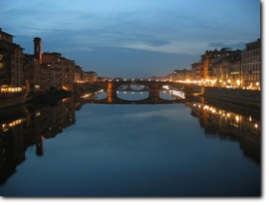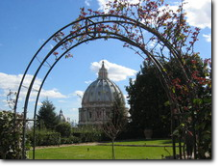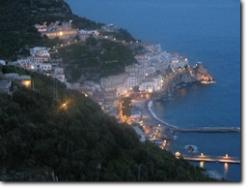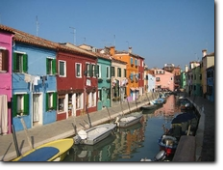Naples Travel | Naples Vacation | Naples Italy | Rome Travels - Rome Travels | Home | Rome Guide | Rome Tours | Rome Travel | Religious Holidays | Italy Pilgrimages | Italy Shore Excursions




Main menu:
Naples Travel | Naples Vacation | Naples Italy | Rome Travels
If you are planning a Naples Travel, consider that the city of Naples has a long and variegated history during the last 2500 years: the primitive nucleus; the Greek and the Roman city; the Medieval one; the Aragonese city (Spanish); finally the city of the XIX and XX century which extends until the boundaries of the so called Campi Flegrei. Naples Italy is a city of contrasts and of paradoxes: in a city whose foundations go back that long ago and with endless city planning continuity, it is ambitious to trace its history.
The oldest sources quote the Greek - Cumanae Partenope and NeaPolis, united to a new city in the V cent. B.C., Partenope became PalePolis (the old city) which doesn’t have to be confused with NeaPolis (the new city). At the end of the IV century B.C. the city became federate to Rome and from that moment PalePolis and Partenope ceased to exist. Due to its loyalty, the great role of Naples during the Roman period allowed to the city to be not completely " Romanized " and to keep the idiom and part of the Greek customs.
Naples was conquered by the troops of Barbarians of Odoacre, then by the Goths, by Belisario, by Totila. It became Byzantine, resisted to the Longobards and it became a self-governing duchy till the XI cent. After the Norman conquest the city passed under the control of the Swabians of Federico IInd with a period of great development. The Swabian were then replaced by Angevins until the advent of Alfonso of Aragon in 1442. Naples became ViceReign with Consalvo de Cordoba on 1503 until the entry of Charles of Borbone (1734).
Needless to remind that it has been declared by the UNESCO "Patrimony of Humanity - Wolrd Heritage".
The old city, followed by the Greek city, extended in the area between the present Via Foria, Costantinopoli, San Sebastiano, Santa Chiara, Umberto I, Pietro Colletta and Capuano Castle, where visitors can see the three “decumani” and “cardini”.
The monuments and the Museums of Naples are a Patrimony which date back VII century B.C. If you are planning a Naples vacation, the artistic and monumental patrimony of Naples include 12 museums, 4 large Picture-galleries, the Acquarium, the Botanical garden, 4 Castels, 5 Gates, 2 Royal Palaces, 6 Parks, 8 Theatres, many fountains and squares, 7 Libraries, a lot of streets and buildings. Moreover, the Churches of Naples (about 200), most of which are important for their architecture, history and artistic value. Last but not least, the catacombs of Naples and subterranean Naples are part of the Naples heritage.
The Ancient Centre is an open-air museum for the archaeology (the Greek and Roman walls, the excavations of S. Lorenzo and Duomo, the Cardini and the Decumani..... In the Old Center, divided in two parts by Spaccanapoli, there are also the most beautiful palaces of the noble families, unique examples of the Renaissance architecture; the magnificent Cloisters; numerous medieval structures (such as the indoor Market placed in Via Tribunali).
NAPLES TOP 5 MUSEUMS -
BEST OF NAPOLI
National Archaeological Museum: It’s the most important archaeological museum in Europe, with a rich collection of coins, the masterpieces of Pompeii, Herculaneum, Oplontis, several of Rome like "The Farnese Bull", or the most important Mosaic representing “the battle of Alexander to Isso”, the group of the Tyrannicides, then the tables of Eraclea and the Rooms of the Temple of Isis. They are sculptures, wall paintings, mosaics, arms, terracottas, pots, bone and ivory objects and jewels.
Civic Museum of Castel Nuovo (Maschio Angioino): inside the Maschio Angioino, construction built in 1279 under the kingdom of Charles I of Angiò, it houses paintings that go from the end of the '300 to the beginnings of the '500 and sculptures of the Neapolitan Renaissance.
Museum of the Royal Palace: Residence of the Royals of Naples.
Museum of Capodimonte : best collections in Naples of the Farnese and Bourbon families with also and Italian paintings. Great Vista over the Gulph of Naples. Part of the same complex are: Museum of Sant Martino, Castel Sant'Elmo, Museo Villa Pignatelli and Museum of Duca di Martina Villa Floridiana.
Santa Chiara Museum Complex : The Museum is found inside the fourteenth-century monastery of Santa Chiara owned by the Clarisse order. Over the top: the Cloister.
NAPLES TOP 5 CHURCHES - BEST CHURCHES IN NAPLES
Cathedral of Santa Maria Assunta or Cathedral: The construction, realized on the end of the XII Cent. on wish of Charles II of Angiò, incorporating the two ancient churches of S.te Restituta and of S.te Stefania, two paleochristian Churches.....The inside is guarded the shrine bust, masterpiece of Gothic sculpture, with the skull and the reliquary which contains the blood of St. Gennaro, patron Saint of Naples, that miraculously melts twice a year.
St. Severo Chapel: Bernini's masterpiece, the Veiled Christ.
New Church of Jesus : best example of the Jesuite order in Naples, tons of gems of the Neapolitan Renaissance and Baroque periods.
Basilica of S.te Claire: simple, phenomenal are its cloister and Museum, a must in Naples.
Church of Pio Monte della Misericordia: there is the Caravaggio's masterpiece, the Sette Opere della Misericordia.
It's only in downtown where the historical ages of old Naples are stratified and overlapped: the Byzantine, Gothic, Lombard, Norman, Angevin, Swabian, Spanish, Austrian, French and Burbon sovereignities. In this place the confectionery tradition of the nunneries and the monasteries, the tradition of the craftmen’s studios, the most typical and famous of which is the production of Christmas cribs located in S. Gregorio Armeno. Visiting the Old Center is an excitant way for an historical revival that starts from the archaelogical site to go through 25 centuries and ends to the current time, amongst emotions, magic, unexpected and sudden discoveries.
Napoli Italia: the artistic vistit to the monuments and to the archaelogical sites must include Roman Villas and ruines which are placed above all on the hill called Posillipo. Donn’Anna Palace and the magnificent baroque Villas, the big caves of the underground (caves made of tuff of the roman period); the Crypta Beapolitana, where Virgilio’s Tomb is placed; and many urbanistic elements of Pizzofalcone, that represent the continuity of the ancient greek acropolis. This does not mean that the monuments, the architecture and the artistic masterpieces are located only in this area. We suggest for your travel to Naples: Piazza Mercato, Via Medina and Piazza Municipio, Piazza Plebiscito and Santa Lucia, Pizzofalcone, Mergellina and Posillipo, Vomero, Camaldoli and Capodimonte.
CAPRI
NAPLES and POMPEII
POMPEII and HERCULANEUM
POMPEII and AMALFI COAST
SHORE EXCURSIONS
In your Naples vacation, consider that this is the city of churches, museums, castles, villas, fountains and squares. The magnificent buildings follow one another and are the best of an artistic survey that rarely can be compared to another one in the world.
Visiting Naples means also and above all “to live the city” : the art of goldsmith; the crafts of the lute-makers; the masterpieces made by the potters of Capodimonte Ceramic.
The Greeks and the Romans, before the visitors came here during the period of Grand Tour, discovered the natural beauties of Naples: its sea, its hills, its mild weather, its wonderful panoramic landscapes. In the toponyms is kept the memory: Mergellina for Mar Ialinum (unpolluted and clear sea water), Posillipo for Pausis Lypè (end of the pain) and so on.
What we highly suggest is the view from Posillipo (Via Petrarca) of the entire Bay of Naples, with the Gulf of Naples, the Islands (Capri, Ischia, Procida), the Mount Vesuvius or a memory of a sunset seen from the the hill of San Martino. Even at night Naples has a spontaneous beauty, that goes beyond the string of pearls of the urban light and makes you discover wonderful and unexpected corners; sudden moments of natural beauty and unexpected faces of an old and always young beauty. A typical Italian flavour is, needless to be reminded, that if you stop in any Naples restaurants, you may taste the most incredible and authentic Italian Pizza.
Naples is where the smiles and wisdom of the people are here since three thousands years. The weather in Naples is a mild offering 12 months to experience its natural beauties, monasteries and landscapes. The parfums of its restaurants and pastries will rape you in moments. The chaotic and colourful downtown will feel you part of the current history. The sound of the Mediterranean Sea, the echos of old Civilizations and the vestiges of 500 years of Royal period will inebriate you leaving fond memories of the Capital of the South of Italy.
We love Naples and its people along with its territory, history and vistas.
Enjoy Naples with us !
NOTE on payments:
To confirm any tour, we require either a deposit or full prepayment by Visa-MasterCard + 21% VAT tax on top.
In case you wish to pay the deposit, it will be charged at cost + 21% VAT and then the balance by cash to your assigned tour guide. The amount of the deposit depends on which kind of tour is selected.
Naples Travel - Itinerary 1 - Greek and Roman - Old Naples
Piazza Cavour, via Duomo, Via dell'Anticaglia, Via Tribunali, Piazza dei Girolamini, Piazza S. Gaetano, Via S. Gregorio Armeno, Piazzetta della Pietrasanta, Piazza Miraglia, Via S. Pietro a Maiella, Piazza Bellini, Via S. Sebastiano, Via Benedetto Croce, Piazza S. Domenico Maggiore, Piazzetta Nilo, Via S. Biagio dei Librai, Piazzetta Crocelle ai Mannesi, Via Vicaria Vecchia, Via Forcella, Piazza Calenda.
Naples Travel - Itineray n.2 - From Medieval times to the Renaissance Naples
a) Borgo Marinaro, via Nazario Sauro, via Acton, piazza Municipio, via Medina, via Monteoliveto, via S. Maria La Nova, piazza del Gesù Nuovo, via Benedetto Croce, via S. Biagio dei Librai, via dei Tribunali, Montesanto, S. Martino.
b) Piazza Mercato, porta Nolana, porta Capuana, via S. Giovanni a Carbonara, via Duomo, piazza Nicola Amore
From www.In-Campania.Com, a very useful Travel Guide of Naples
FREE DOWNLOAD - .PDF FILE, 832 kb - 17 pages
All possible itineraries of Naples
Things to do in Naples - Easy Naples
Download the File
Here
Guiding fee - Costs - 4 hours tour :
1-6 people: 300,00 EUR
7-14 people: 400,00 EUR
15-20 people: 35,00 EUR per person
21-50 people: 25,00 EUR per person
Private Tour Guide with private transportation - 4 hours tour
1-2 people: EUR 550,00
3-7 people: EUR 600,00
8-17 people: EUR 75,00 per person
18-40 people: EUR 60,00 per person
Note: entrance fees not included.

